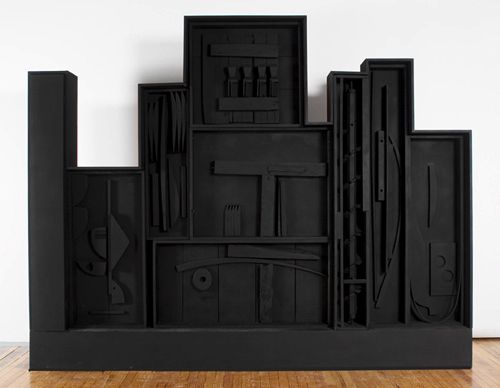It was in her home on Thirtieth Street in New York City that Nevelson created her first “walls”—work that incorporated the architectural principles she believed were fundamental to life.
Walking around her neighborhood, often at night, she found a treasure trove of society’s detritus—both the common household items and old furniture one might throw away in the course of everyday life and the architectural salvage from buildings nearby that the city was demolishing to clear land for the construction of the new development project.
Back home in her studio, Nevelson used these found objects and discarded wooden crates she also picked up in the street to create the components for her wall sculptures and environments.
From the very beginning, one of Nevelson’s methods of building her work was using recycled and repurposed materials that she either had found in the street or had taken from one of her other pieces.
To create Winged City, one of her first wood assemblages, she reused parts from a sculpture she had exhibited ten years before. In The Tropical Gardens and Tide Garden IV, we see another of Nevelson’s building methods at work. Individual salvaged pieces are arranged in boxes that become modules—a common architectural device—that are then arranged to form a final harmonious assembly.
My name is Adrienne Montare, and that was an excerpt from my essay, Artist as Architect. To read the full essay, purchase a copy of the exhibition catalog Architects of Being: The Creative Lives of Louise Nevelson and Esphyr Slobodkina.

